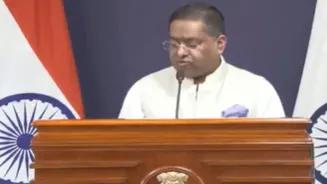A New Diplomatic Era
The inauguration of South Korea's new president signaled a shift in foreign policy priorities. The administration recognized the critical importance of strong
relationships with major powers. The focus extended to repairing any strained diplomatic ties and forging new pathways for collaboration. This approach came from a recognition of interconnectedness in a rapidly evolving global landscape. The objective was to enhance South Korea's standing and resilience in the face of various international challenges. This marked a deliberate departure from previous approaches, indicating an emphasis on pragmatic diplomacy. The shift had a goal of securing South Korea's strategic interests. This included stability, economic growth, and the peaceful resolution of regional issues. The new president initiated a series of diplomatic engagements. These activities aimed to restore confidence and mutual understanding among these nations.
Strengthening US Relations
One of the most immediate priorities for the new South Korean leadership was the enhancement of the alliance with the United States. This involved strategic alignment on a variety of global issues, and regular communication. The intention was to reaffirm the commitment to the security partnership, particularly in light of evolving geopolitical challenges. The leaders addressed economic collaborations and worked to strengthen trade relations between the two countries. South Korea aimed to ensure its continued access to technology, investment, and market opportunities. These endeavors included high-level talks and frequent dialogues aimed at coordinating policies. This approach indicated the importance of a strong, reliable alliance in navigating a complex international environment. This was viewed as essential for deterring aggression and maintaining regional stability. The new leadership worked on aligning South Korea's foreign policy with the US, promoting common values and fostering closer collaboration.
Mending Ties with Japan
The improvement of relations with Japan was another critical aspect of South Korea's new foreign policy direction. Historical tensions and unresolved issues had long hampered the relationship. The new administration made a concerted effort to address these issues. This involved a focus on moving beyond the historical disputes. They concentrated on building a forward-looking relationship. The emphasis was on economic cooperation, technological collaboration, and joint efforts on regional security challenges. Leaders took steps to facilitate dialogue, exchange visits, and cultural exchanges. These activities were designed to create a positive atmosphere and build trust. South Korea realized the importance of the partnership with Japan. This included a unified front against potential threats and a combined economic strength in the region. The goal was to foster a more stable and prosperous future.
Engaging with China
South Korea's new president recognized the significance of China's role in the region. A key element of the foreign policy agenda was to engage with China. This engagement included fostering economic ties, managing security concerns, and ensuring diplomatic channels remained open. The focus was on maintaining a constructive dialogue while navigating the complex relationship. The administration was focused on finding common ground. It involved promoting trade and investment. The goal was to ensure continued economic prosperity. Discussions were held on addressing potential disagreements to ensure a stable regional environment. South Korea's policy sought to balance its economic interests, regional security, and diplomatic relations with China. This balance recognized the need for cooperation. This fostered stability, and maximized South Korea's influence on the world stage.















